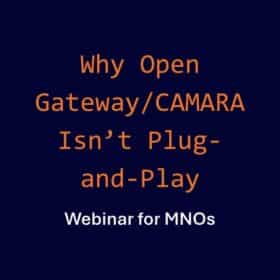AAA – Roam Where You Want To…..
In previous articles we have talked about the essential nature of AAA / Access Manager and how it enables VoWiFi, extending IMS. Augmenting Wi-Fi services is an effective way for operators to protect their core business. Wi-Fi calling or Voice over Wi-Fi (VoWiFi) enables network operators to expand their coverage and provide their users, and business customers, with consistently good user experience and access to services. An IMS-based service that allows users to make and receive calls (and send text messages) over a Wi-Fi.

The user’s phone – a VoWiFi-supported device – has Wi-Fi calling settings that can be turned on or off, provided it is supported by the operator. Mobile Network Operators don’t need to have their own Wi-Fi network infrastructure in place; Wi-Fi calling can be deployed without a single access point or partnership with service providers, as it can use public hotspots or home Wi-Fi.
Besides, the mobile network operators can deliver a richer user experience by integrating with their user’s subscribed services, for instance.
- MNOs offering Voice over LTE (VoLTE) or Voice over New Radio (5G non-SA) can provide seamless handoff from cellular to Wi-Fi calls.
- Provide alternative economical Wi-Fi based access to users outside their home networks with VoWiFi roaming.
- Steer users to their or operator preferred Wi-Fi provider using IP based location services.
With the releases of Wi-Fi 6 and Wi-Fi 7 operators will be able to extract greater value from them on top of their traditional mobile business, this especially adds a new dimension to their roaming and IoT business considerations.
The full business potential remains to be developed
Providing Wi-Fi calling in roaming scenarios requires operators to consider several questions:
- authentication of their users
- delivering services to them
- usage and billing
How roaming is implemented adds to this list; for instance, wholesale roaming is becoming popular where a home network partners with an operator with a, well established, roaming network, where the former enables services to their users when roaming without having to build their own roaming partnerships. As an example, one way to support Wi-Fi calling in a wholesale case the user device is associated to 2 (two) IMSIs and the home network needs to associate the IMSI used while roaming to the one used at home which is used to authenticate the user. The AAA in the home network is a natural point where the operator can select the right IMSI to authenticate in the home HSS. This is a core use case for seamless roaming access for new operators and MVNO. It can be complicated further with more specialized entitlement services for customized device (Apple, Android and IoT) access management. The variety of such use cases will significantly increase because of eSIMs.[2]
The challenge for the mobile operator to take advantage of demand is both scale and diversification of services and device types. Provisioning who is authorized for roaming, identity, entitlement & policy mapping as well as auditing usage with standard protocols are all key parts of the service of wholesale roaming. In addition, when providing this capability to multiple MVNO/Operators it is important to consider scale and resilience – handling both large and small device communities and their access in separate virtual nodes in cloud/HA deployment architecture should be considered.
To make it work requires a AAA/Access manager capable of:
- 3GPP compliant interfaces to integrate with core network functions like the HSS, PGW, ePDG, Entitlement Server and integration with both trusted and untrusted IP accesses.
- Handover to, and from, VoLTE and VoNR
- Usage reporting for billing (over RADIUS and Diameter)
- Integration with Entitlement solutions (over SWa) to validate devices for Wi-Fi calling (in case of Apple or Android)
- Enable device authentication in integration with wholesale roaming providers (when including Wi-Fi calling services)
- Open interfaces to integrate with operations monitoring.
- Cloud based solution addressing both virtualized and containerized infrastructure strategies.
- Distributed cloud native architecture to enable separation of network traffic and optimize resource use.
Enea’s Access Manager is a 3GPP AAA deployments directly and with our key partners. Enea provides AAA / Access Manager as virtualized software increasing the cost benefit of capacity expansion for wholesale roaming capability. The Access Manager has been deployed in more than 40 Operator networks including several large Tier 1 Telcos. It has demonstrable interoperability across a wide range of interfaces and solution use cases.
For more information
References:
[1] BICS roaming Data
https://bics.com/press-releases/5g-roaming-traffic-soars-on-bics-network/
[2] “DEVELOPMENTS IN THE MARKET ARE SET TO ENABLE ESIM AT UNPRECEDENTED SCALE” https://kaleidointelligence.com/esim-market-press-release-2023/

